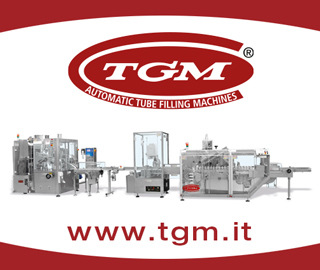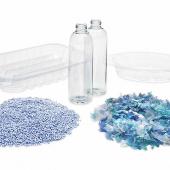Sustainability in Lavazza: an endless journey
The history of Lavazza, the global coffee producer and sector leader, is permeated with a structured approach to sustainability that goes beyond “simple” solutions and embraces the complexity of the question. We here report our conversation with Francesca Squillace, who takes stock of regulations and consumer habits.
Maria Costanza Candi
In an interview given some time ago to ItaliaImballaggio by Francesca Squillace, packaging and materials director in Lavazza, she talked to us about company prospects on the R&D front, a topic which we are returning to today in order to discover the state-of-the-art in the light of the company’s journey and recent regulatory developments, first and foremost the approval of the PPWR with its impact on packaging in general and on disposable packaging in particular.
« We have defined sustainable goals on the packaging roadmap - Squillace begins - important points for Lavazza which, after having reached 76% of recyclable packaging in 2023, aims at 100% recyclable and compostable packaging by 2025. It’s a goal which we are monitoring through KPIs designed to impact on the carbon footprint, with actions, in particular, on packaging design, reduction of the mass ratio, increase in the circularity rate and improvement in recyclability. The journey started in 2020, with targets for 2025, anticipating the PPWR legislation, which has set 2030 as the major time horizon».
The value of shared rules
Recyclability targets, the use of recycled content and the reuse of packaging as established by the recent European regulation were, in fact, concrete realities for Lavazza years in advance.
«Measures adopted - Francesca Squillace continues – include eco-design criteria with a view to 2027, the scouting of new high-barrier materials, recyclable solutions and the revamping of production lines, on which we have tested impact and machinability. For a big end-user like Lavazza, whose product cannot be properly preserved without a packaging with high-quality barrier qualities, the PPWR has, therefore, a significant impact, as Squillace once more underlines.
«A common legislation is a necessary step to unify the politics of different countries, today extremely fragmented and driven by totally different criteria and logics, making doing business complex and actions in favour of sustainability often ineffective. It’s sufficient to refer to some “numbers”: in Italy, the presence of 50% paper in an item of packaging defines its disposal channel, while in Germany this percentage rises to 95%. This demonstrates how a shared legislation is essential to provide producers with correct benchmarks. If we look at coffee, for example, high-barrier paper-based packaging is an option which is difficult to achieve, given the difficulty today of obtaining a paper-based structure that guarantees protection from the permeability of oxygen and water and which is at the same time easily recyclable on a large scale. Harmonising is, therefore, necessary, but equally so is for the legislator to assess with packaging producers the state-of-the-art and the availability of products and materials that make it possible to effectively comply with such stringent criteria ».
Environmental, but also economic and production sustainability
It should be remembered that sustainability is a complex concept that certainly relates to the environment, but also to the economy and society as a whole. This makes it necessary to apply criteria that allow the market to proceed in a dynamic way, albeit with attention to the environment. Despite the critical issues imposed by greater investments and paradigm changes, it is shared opinion that legislation capable of harmonising the sustainability and recycling policies of member States is essential, and Lavazza shares this view.
«On production lines like ours, the requirement to achieve growing recycled percentages is very complex. It’s necessary to work on eco-design, taking into consideration bio-based polymers, polyolefins with recycled percentages, finding, however, the right balance between product shelf-life and sustainability, avoiding overpackaging which leads to more waste, but also underpackaging, which puts food safety at risk, offering the consumer an altered product ».
New materials: the frontier of R&D
Materials play a crucial role in this balance involving sustainability and shelf-life, and this is why Lavazza is investing in both R&D and in the creation of a network of qualified partners able to push transformation towards better solutions.
«The research of new materials has prompted us to overcome the multi-material concept that reduces recyclability due to the lack of uniformity of the components. The response to the limits of multi-material is, therefore, polyolefin-based mono-material and recycled material (in particular PE or PP), which makes it possible to achieve environmental impact reduction targets. With regards to the new materials, they are key features of the structures of the “aluminium free” one kg packs and in the brick packs sold in Italy and France. Tests have enabled us to take a careful look at the readiness of the packaging industry and options linked to flexible packaging».
Investments in process and production
The development of new plants is not exempt from the objectives that Lavazza has set itself. Investments, in fact, also include the definition of new strategies for managing the entire supply chain, from production to transport, from the packaging material to waste management, about which themes Francesca Squillace goes on to say:
«In general, we have searched for new technological solutions that allow us to define recyclable packaging solutions according to the main available guidelines, with the objective of developing packaging that can be recycled in major sales markets.
To align objectives also in production, finally, 25 million of investments have enabled Lavazza to convert 7 lines, of which 3 of capsules, in addition to the 12 installed, one of which dedicated to solutions in aluminium.
Significant investments and tests have clearly shown us that it is not possible to complete these initiatives alone but that partners, start-ups and Universities are needed to allow us to have new structures and new materials coming from cutting-edge projects, aiming at shared development in order to offer effective and innovative sustainable materials on the shelves. It’s an internal engagement process that has involved all business areas and particularly Engineering in a joint effort that aims to invest in budget and technological solutions. Sustainability has significant implementation costs; this imposes efficiency-boosting strategies in all phases in order to it to be pursued and achieved. Also on the organisational front, KPIs are, therefore, essential for defining a roadmap shared by all departments, working on the entire process to define the impact of the new packaging lines on business management ».
A call to conscious consumption
Francesca Squillace’s concluding observations are linked to a pragmatic vision of sustainability which, while being a fundamental issue for the future of the planet, cannot ignore economic, managerial considerations and technical feasibility. It is important to remember, in this sense, the essential role played by the awareness of the consumer, perhaps very motivated to the search for green products but not always willing to pay the price, which suggests the need for work on awareness, involving consumers, the legislator and the producers of materials.
«With regards to the design of packaging in the next few years, I see the need for a legislation which, however rigid, performs a stimulating function for the entire supply chain, from producer the material producer to the consumer. In this regard it is necessary to define a trade-off between sustainability, shelf-life and consumption. If we want to be sustainable, in fact, the consumer must also accept shorter shelf-lives, in which 12 months can become 8. This is without forgetting the needs of distribution, often on a global scale, which imposes preservation times and methods which are not always compatible with the green packaging currently available. It should be remembered, in fact, that it’s not possible to expect a shelf-life of 24 months from many sustainable, recycled or recyclable materials. This is why it’s necessary to work on awareness, to arrive at a sensitivity to the question that leads us to accept a lower endurance of shopping bags made of a biopolymer that gives it a lower environmental impact. It’s a compromise that reduces the bag’s resistance but enhances its ethical and ecological content».




















